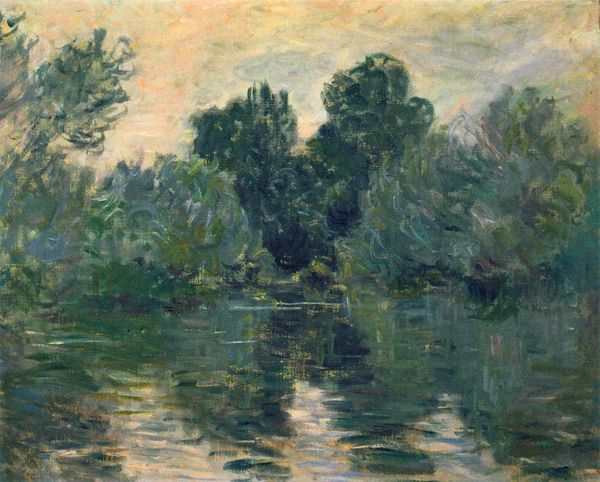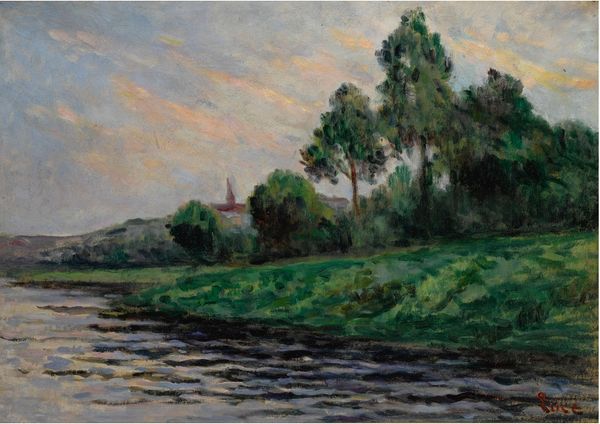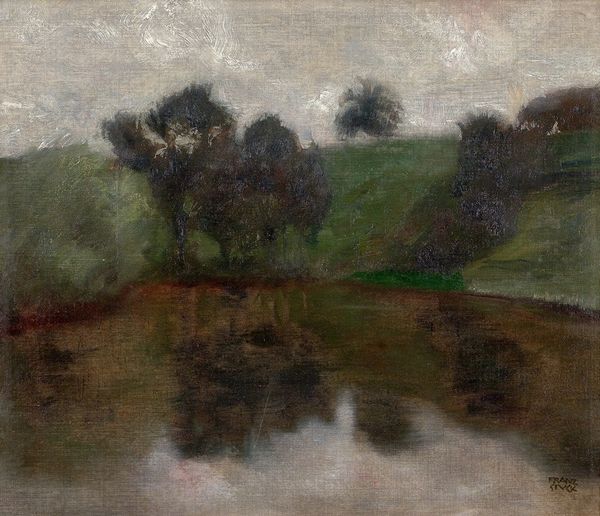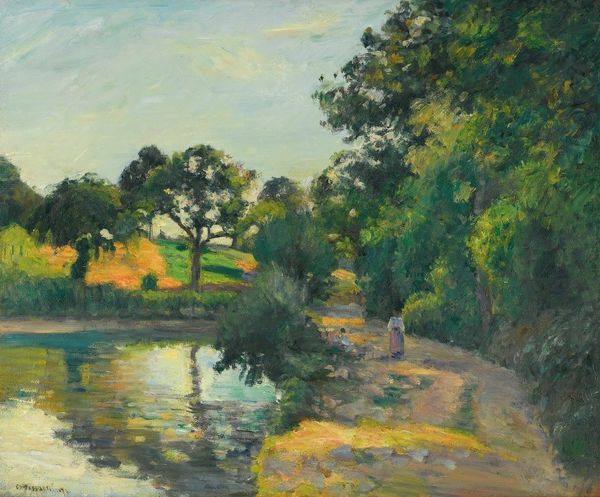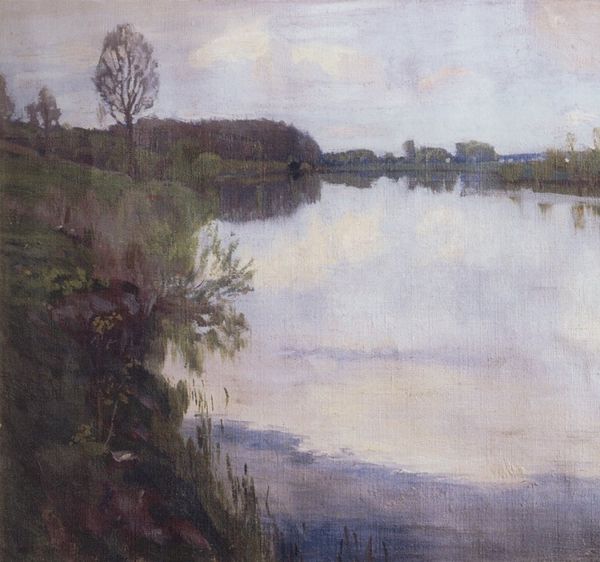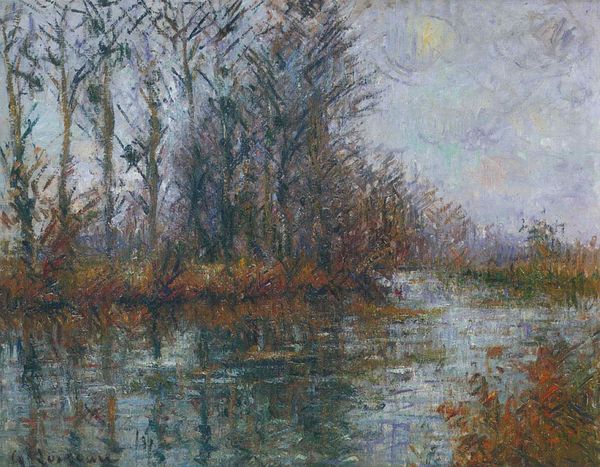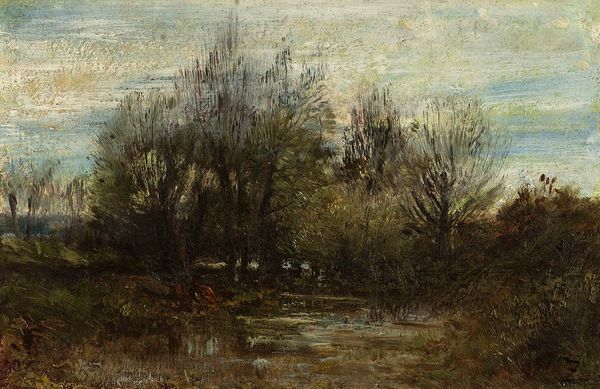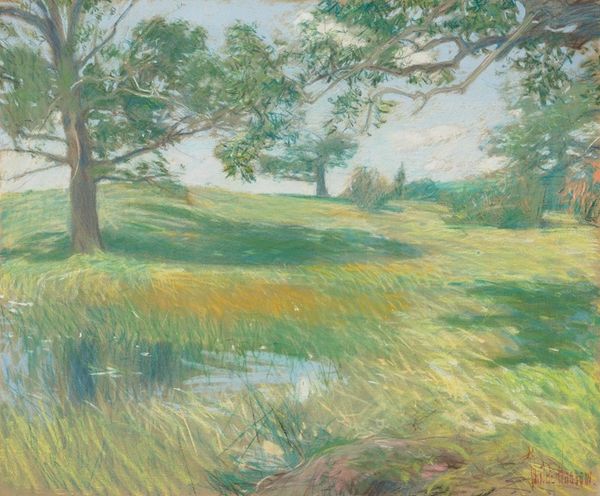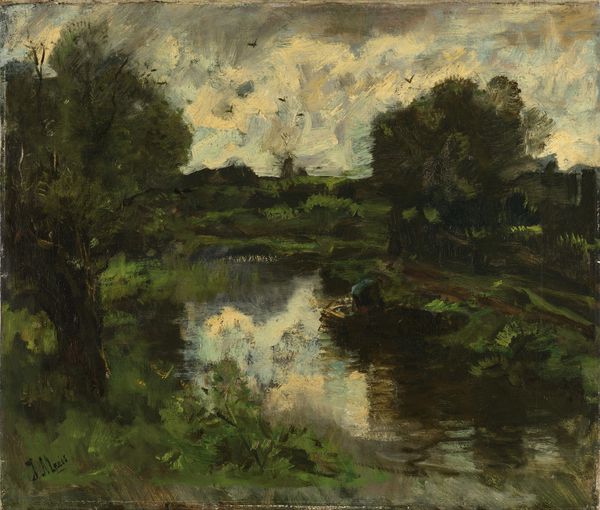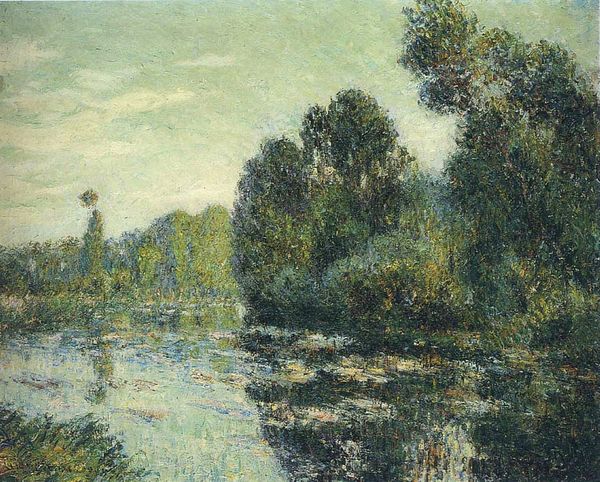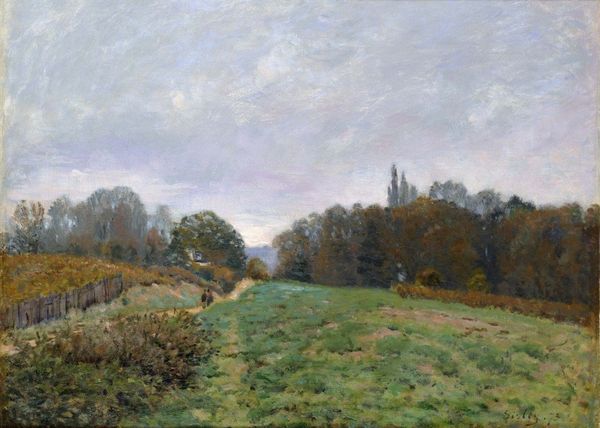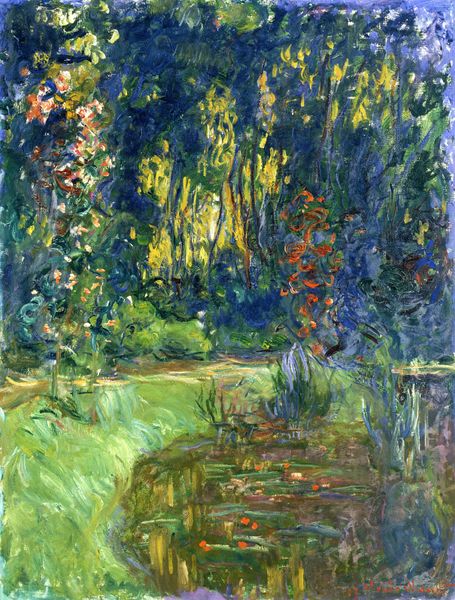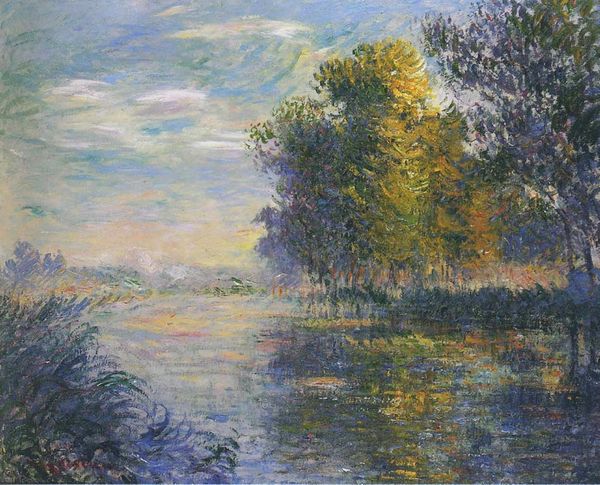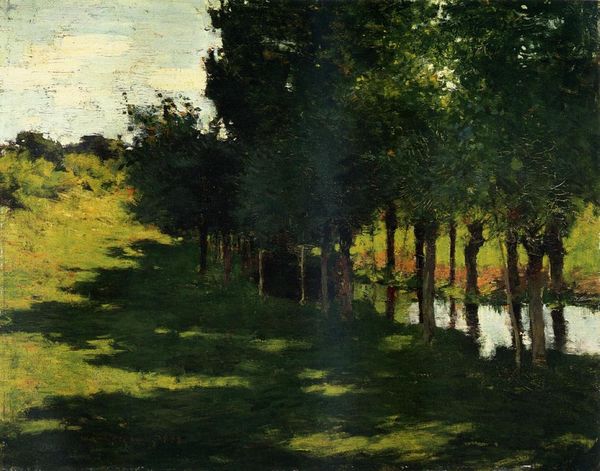
painting, plein-air, oil-paint, impasto
#
painting
#
impressionism
#
plein-air
#
oil-paint
#
landscape
#
impressionist landscape
#
nature
#
impasto
#
landscape photography
Copyright: Public Domain: Artvee
Curator: Immediately, the muted color palette creates such a somber mood, doesn’t it? The heavy brushstrokes make the trees almost menacing. Editor: Yes, there's a palpable melancholy to it. This is "At Calcot," an oil on canvas painted en plein air by John Singer Sargent, most likely sometime between 1885 and 1890. Considering Sargent’s wider oeuvre, steeped in portraits of the upper class, his venture into landscapes around this time presents such an intriguing turn. What drove him toward scenes of pastoral quietude? Curator: It is interesting, isn't it? Perhaps he was reacting against the rigidity of portraiture, searching for authenticity and freedom in depicting landscapes. I am very keen on how it portrays class. Landscape art has long served to shape understandings of nature, often in ways that justified the dispossession of indigenous communities. How might Sargent’s pastoral scene perpetuate specific understandings of property and belonging in rural England at the time? Editor: That is an astute observation. Looking at the art world, we see that landscapes provided an escape from the urban pressures, but these depictions were inevitably tied to social and political forces. This was around the time that Impressionism gained popularity, making painting outdoors and depicting everyday subjects possible. However, most art still came at a great cost for regular working class citizens. This creates an interesting narrative because the work's stylistic characteristics reflect popular aesthetics, and therefore may seem accessible, however the subject matter is reflective of elite pastimes. Curator: That reminds me, the impasto technique used is particularly compelling; it almost feels like a raw, emotional expression—quite unexpected, juxtaposed against this seemingly placid setting. It makes you wonder about Sargent’s own emotional state. What was he trying to convey? Editor: Considering his usual subjects and the patrons of the time, it might have also served as a challenge. By embracing Impressionism, he entered new circles. "At Calcot" stands as evidence of a multifaceted shift in both style and setting for Sargent, indicative of broader changes occurring within the art world at the time. Curator: And, by observing what he does next, we might get some answers. What a compelling landscape, rife with so much nuance. Editor: It’s a fascinating window into a moment of change, for Sargent and the artistic conventions surrounding him.
Comments
No comments
Be the first to comment and join the conversation on the ultimate creative platform.
